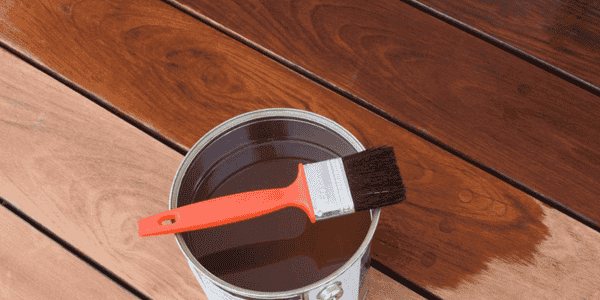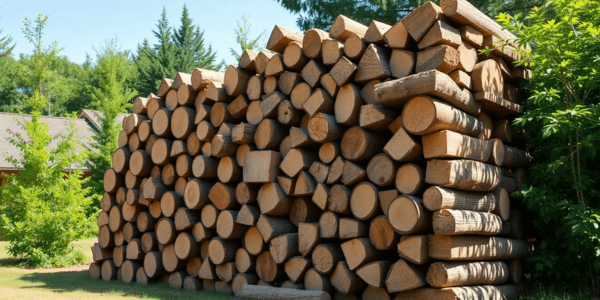When building or remodeling a home, one of the most significant decisions involves selecting the right wall material. Two popular options in the USA are drywall and wood walls. While drywall dominates modern construction due to its affordability and ease of installation, wood walls remain a favorite for their timeless aesthetic appeal and durability. Each material comes with its own set of strengths, weaknesses, and ideal applications.
In this article, we’ll compare drywall and wood walls in terms of cost, installation, durability, maintenance, aesthetics, and energy efficiency. This comprehensive guide will help you determine the best option for your home or project.
What is Drywall?
Drywall, also known as gypsum board or sheetrock, is a panel made of gypsum plaster sandwiched between paper layers. It is the standard material for interior walls in most homes due to its affordability, versatility, and ease of use.
Advantages of Drywall:
- Affordability:
Drywall is one of the most cost-effective wall materials available, making it ideal for large-scale projects and budget-conscious homeowners. - Easy Installation:
Drywall is lightweight and easy to install compared to wood. It can be quickly cut, mounted, and finished with tape and joint compound. - Smooth Finish:
Drywall offers a seamless, flat surface that’s perfect for painting, wallpapering, or texturing. - Fire Resistance:
Gypsum in drywall is fire-resistant, helping to slow the spread of flames during a fire. Special fire-rated drywall is available for extra protection. - Soundproofing:
Drywall provides good sound insulation, particularly when combined with insulation materials or thicker panels. - Availability:
Drywall is widely available in various thicknesses and sizes, making it a practical choice for any interior project.
Disadvantages of Drywall:
- Less Durable:
Drywall is prone to dents, holes, and scratches. It’s not as strong as wood walls and may require frequent repairs in high-traffic areas. - Water Damage:
Drywall absorbs moisture, making it vulnerable to mold, swelling, and crumbling in damp conditions. Moisture-resistant drywall (green board) can address this to some extent. - Limited Design Appeal:
While drywall is versatile, it lacks the warmth, texture, and natural beauty of wood. - Maintenance:
Repairing damaged drywall involves patching, sanding, and repainting, which can be labor-intensive.
What are Wood Walls?
Wood walls are constructed using solid wood planks, plywood, or engineered wood panels. They offer natural beauty, warmth, and a sense of craftsmanship that drywall cannot replicate. Wood walls are often seen in rustic, traditional, or high-end interiors.
Advantages of Wood Walls:
- Aesthetic Appeal:
Wood walls bring natural beauty, warmth, and texture to a home. Whether using reclaimed wood, shiplap, or paneling, wood walls create a luxurious and timeless look. - Durability:
Wood is strong, long-lasting, and more resistant to dents and damage compared to drywall. With proper care, wood walls can last for decades. - Insulation:
Wood has natural insulating properties, helping to keep your home warmer in the winter and cooler in the summer. - Moisture Resistance:
Wood walls are less vulnerable to water damage compared to drywall, especially if treated or sealed properly. - Customizable:
Wood can be painted, stained, or carved to create custom designs, making it a versatile material for decorative purposes. - Eco-Friendly:
Using sustainably sourced wood or reclaimed wood is an environmentally conscious choice, especially for green homes.
Disadvantages of Wood Walls:
- Higher Cost:
Wood walls are significantly more expensive than drywall, especially if high-quality solid wood or custom designs are used. - Installation Difficulty:
Installing wood walls requires more time, skill, and specialized tools compared to drywall. - Prone to Pests:
If untreated, wood walls can attract termites or other wood-boring insects. Regular maintenance is necessary to prevent infestations. - Maintenance Needs:
Wood walls may require sanding, staining, or sealing over time to maintain their appearance and structural integrity. - Fire Hazard:
Wood is combustible, and untreated wood walls pose a greater fire risk compared to fire-resistant drywall.
Drywall vs. Wood Walls: Key Comparison
| Feature | Drywall | Wood Walls |
|---|---|---|
| Cost | Affordable, budget-friendly | Expensive, premium cost |
| Installation | Quick, easy, and beginner-friendly | Complex, requires skilled labor |
| Durability | Prone to damage; moderate lifespan | Highly durable, long-lasting |
| Appearance | Smooth, plain surface | Natural, warm, and textured |
| Fire Resistance | Good; fire-rated options available | Poor; combustible unless treated |
| Water Resistance | Vulnerable to moisture | Better resistance with proper sealing |
| Maintenance | Requires patching and repainting | Needs sealing, staining, or treatment |
| Insulation | Moderate; requires extra insulation | Naturally insulating |
When to Choose Drywall
Opt for drywall if:
- You’re on a budget and need a cost-effective solution for your walls.
- You want smooth, clean walls that can be painted or wallpapered easily.
- The project involves large, modern spaces like bedrooms, living rooms, or offices.
- Fire resistance is a concern, and you want to meet building codes.
Best Applications: Modern homes, apartments, commercial buildings, and budget-conscious remodels.
When to Choose Wood Walls
Choose wood walls if:
- Aesthetic appeal and character are your top priorities.
- You’re designing a rustic, traditional, or high-end space where wood’s beauty can shine.
- Durability and resistance to wear-and-tear are essential.
- You’re willing to invest in long-term maintenance and cost for a luxurious look.
Best Applications: Luxury interiors, accent walls, rustic cabins, farmhouse kitchens, or spaces where durability is critical.
Final Thoughts
Both drywall and wood walls offer unique benefits and challenges, and the right choice depends on your project goals, budget, and design preferences. Drywall is affordable, easy to install, and perfect for creating smooth, modern walls. On the other hand, wood walls bring warmth, texture, and a timeless aesthetic that enhances a home’s character.
For most homeowners, a mix of both materials is often the ideal solution: drywall for standard walls and wood for standout features like accent walls or custom spaces. By understanding the differences, you can make an informed decision that ensures your home is both functional and visually stunning for years to come.


